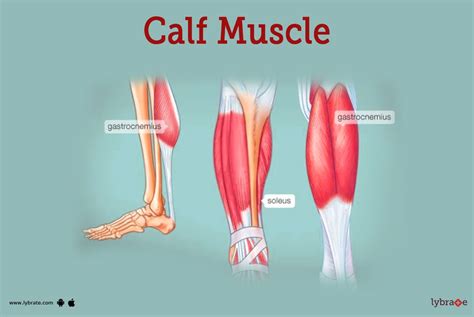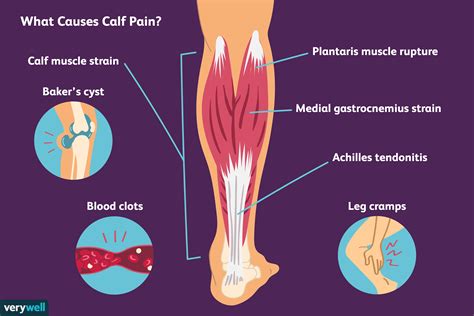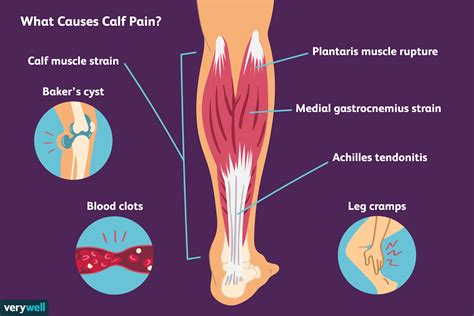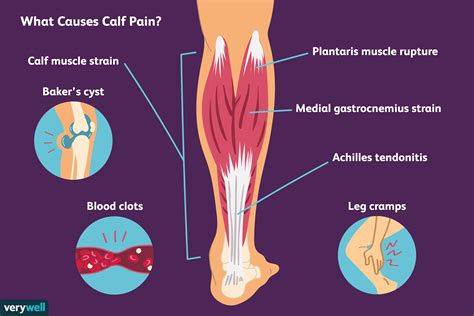Intro
Calf muscles hurt explained: Understand causes, symptoms, and relief for sore calf muscles, including strains, cramps, and shin splints, to alleviate lower leg pain and promote recovery.
The calf muscles, located at the back of the lower leg, play a crucial role in our daily activities, from walking and running to standing and balance. However, calf muscles can sometimes become a source of pain and discomfort, affecting our mobility and overall well-being. If you're experiencing calf muscle pain, you're not alone. Calf muscle pain is a common complaint, and understanding its causes, symptoms, and treatment options is essential for effective management and relief.
Calf muscle pain can manifest in various ways, ranging from mild soreness to severe, debilitating pain. The pain may be constant or intermittent, and it can be triggered by specific activities or movements. In some cases, calf muscle pain can be accompanied by other symptoms, such as swelling, redness, or limited mobility. Identifying the underlying causes of calf muscle pain is crucial for developing an effective treatment plan. Some common causes of calf muscle pain include overuse or repetitive strain, muscle imbalances, poor foot biomechanics, and underlying medical conditions.
The calf muscles are composed of two main muscles: the gastrocnemius and the soleus. The gastrocnemius muscle is the more superficial of the two and is responsible for knee flexion and ankle plantarflexion. The soleus muscle, on the other hand, is deeper and plays a key role in ankle plantarflexion and balance. When these muscles become injured or inflamed, it can lead to pain and dysfunction. In addition to muscle injuries, other factors, such as poor footwear, inadequate training, or underlying medical conditions, can contribute to calf muscle pain.
Understanding Calf Muscle Anatomy

Calf Muscle Functions
The calf muscles play a crucial role in various movements, including walking, running, jumping, and balance. The gastrocnemius muscle is responsible for knee flexion and ankle plantarflexion, while the soleus muscle is responsible for ankle plantarflexion and balance. The calf muscles also help to stabilize the ankle joint and facilitate movement. When the calf muscles become injured or inflamed, it can lead to impaired function and mobility.Causes of Calf Muscle Pain

Common Causes of Calf Muscle Pain
Some common causes of calf muscle pain include: * Overuse or repetitive strain * Muscle imbalances * Poor foot biomechanics * Underlying medical conditions, such as peripheral artery disease or deep vein thrombosis * Inadequate training or warm-up * Poor footwear or equipmentDiagnosing Calf Muscle Pain

Diagnostic Tests for Calf Muscle Pain
Some common diagnostic tests for calf muscle pain include: * Ultrasound * MRI * X-ray * Electromyography (EMG) * Nerve conduction studies (NCS)Treatment Options for Calf Muscle Pain

Conservative Treatment Options for Calf Muscle Pain
Some common conservative treatment options for calf muscle pain include: * Rest, ice, compression, and elevation (RICE) * Physical therapy, such as stretching and strengthening exercises * Orthotics or shoe inserts * Pain medication or injections * Activity modification or avoidancePreventing Calf Muscle Pain

Tips for Preventing Calf Muscle Pain
Some common tips for preventing calf muscle pain include: * Gradual progression and adequate warm-up * Proper equipment, such as supportive shoes or orthotics * Maintaining good posture and avoiding overpronation or supination * Strengthening and stretching exercises * Activity modification or avoidanceWhat are the common causes of calf muscle pain?
+Calf muscle pain can be caused by a variety of factors, including overuse or repetitive strain, muscle imbalances, poor foot biomechanics, and underlying medical conditions.
How can I diagnose calf muscle pain?
+Diagnosing calf muscle pain involves a combination of physical examination, medical history, and diagnostic tests, such as ultrasound or MRI.
What are the treatment options for calf muscle pain?
+Treatment options for calf muscle pain depend on the underlying cause and severity of the condition and may include conservative treatment options, such as rest, ice, compression, and elevation (RICE), or medical interventions, such as pain medication or injections.
If you're experiencing calf muscle pain, it's essential to seek medical attention to determine the underlying cause and develop an effective treatment plan. By understanding the causes, symptoms, and treatment options for calf muscle pain, you can take the first step towards alleviating pain and restoring mobility. We encourage you to share your experiences and tips for managing calf muscle pain in the comments below. Additionally, if you found this article helpful, please share it with others who may be experiencing similar issues. By working together, we can promote awareness and education about calf muscle pain and help individuals achieve optimal health and well-being.
